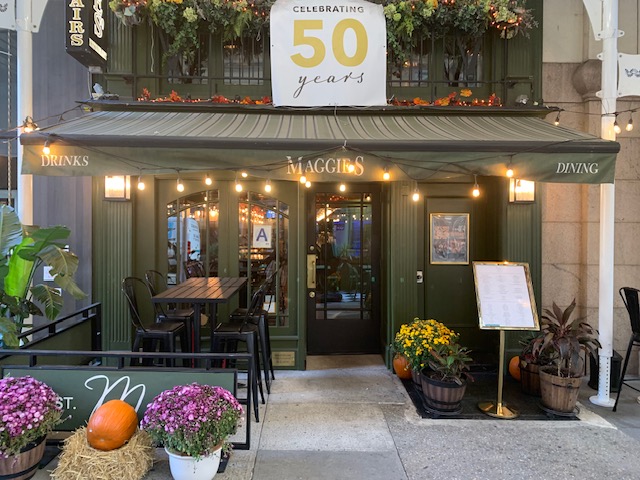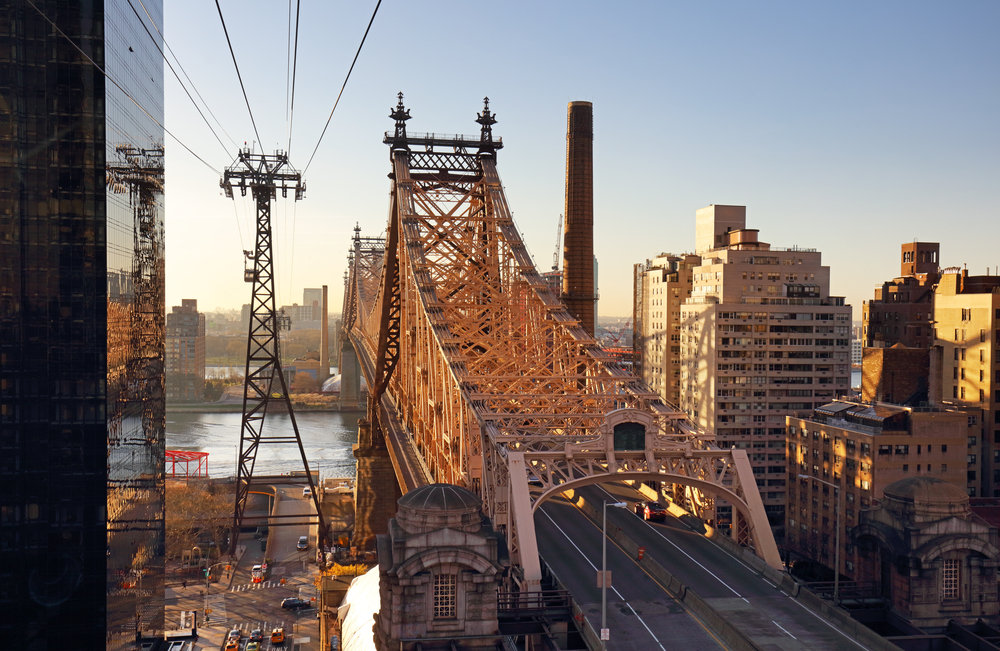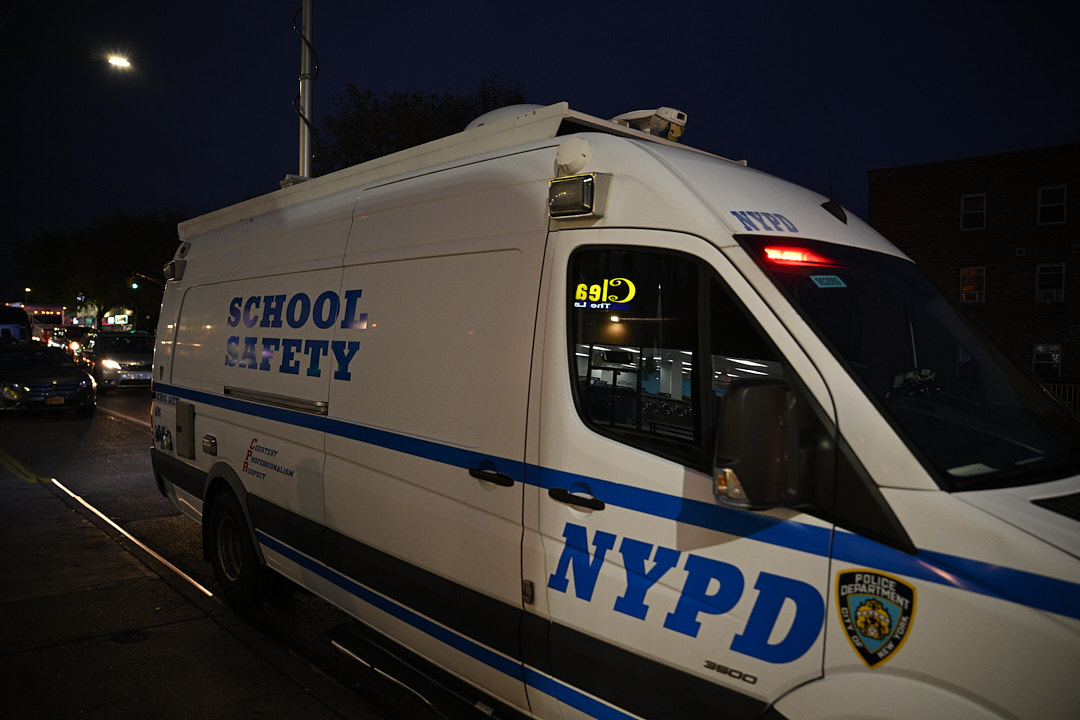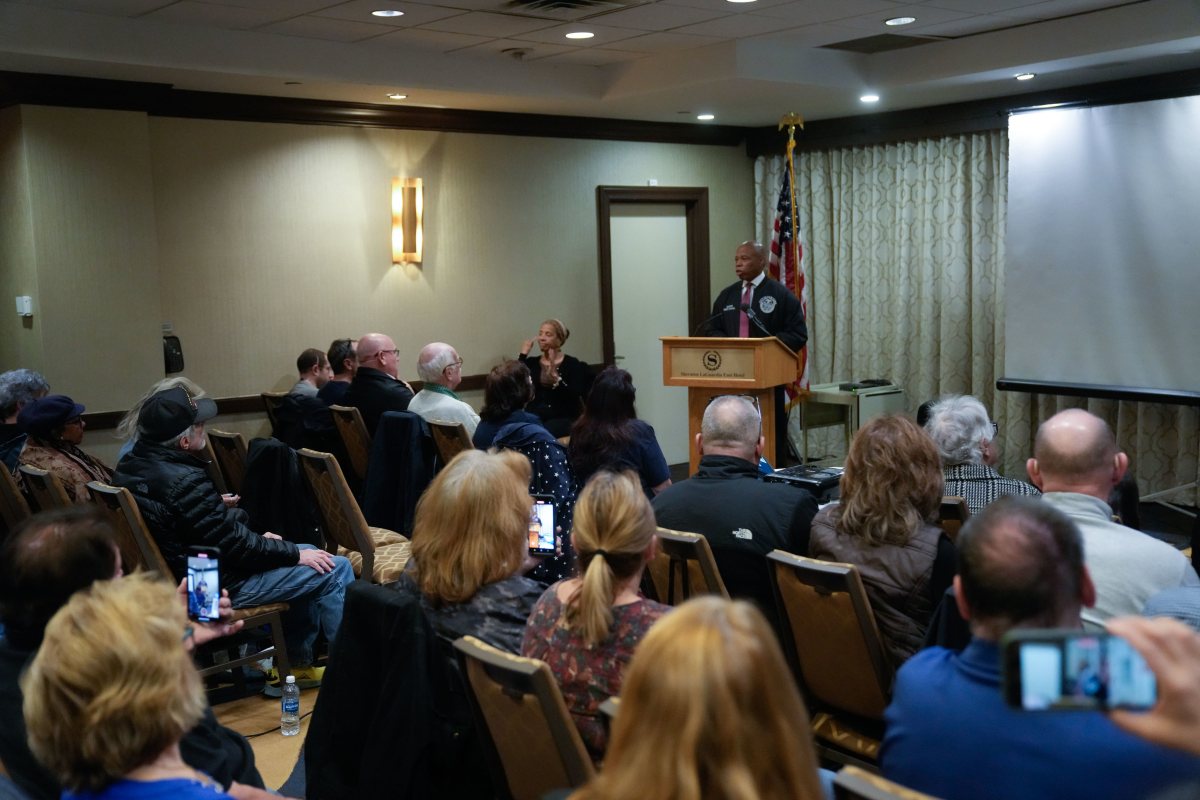By Albert Amateau
Hudson Square North residents and property owners went into a huddle last week to figure out how they want development to proceed in an 18-block area where Donald Trump’s 43-story condo hotel is nearing completion.
The area, where Trinity Real Estate is the major property owner, extends roughly from Houston St. on the north to Canal St. on the south and between Greenwich St. on the west to Sixth Ave. on the east. Its high-density, M1-6 manufacturing zoning allows hotels as large as the Trump project — a sore point for most of the people at the Nov. 5 brainstorming session.
Just outside the area is the site of the proposed three-district Department of Sanitation garage at Spring between Washington and Greenwich Sts., a development that many neighbors hate, but which the City Planning Commission has approved pending a final vote of the City Council.
Heavy auto traffic generated by the Holland Tunnel entrance also exerts a major impact on the area.
“Our goal is to anticipate the potential rezoning of the manufacturing district,” said Brad Hoylman, chairperson of Community Board 2, which convened the Nov. 5 session where about 100 neighbors and representatives of elected officials gathered.
“We were able to zero in on a range of specific issues, from the need to retime traffic lights on Greenwich St. to broader issues, like the need for a variety of retail uses and affordable housing,” Hoylman said.
Hoylman noted that City Council Speaker Christine Quinn had met with City Planning about the potential rezoning and arranged for the C.B. 2 brainstorming session.
“We appreciate City Planning’s willingness to listen to the community,” said Hoylman.
Trinity Real Estate is sponsoring a new business improvement district in the area, and has been exploring a rezoning of the M1-6 district with the Department of City Planning.
People at the Nov. 5 session suggested that City Planning should consider a broader area for a comprehensive rezoning, looking as far north as Christopher St. and west to the Hudson River to include adjacent M1-5 and M2-4 districts in a rezoning proposal.
A limit on new hotels was also on the wish list. In addition to the Trump project, there are five hotels planned for the area, although the current financial market casts doubt on their fate.
Another consensus of the meeting was for a height limit on new development and a limit on air-rights transfers. Neighbors also called for the elimination of a plaza bonus available to developers.
The current floor area ratio, or F.A.R., in the M1-6 zone is 10, but it can go to an F.A.R. of 12 — a 20 percent bonus — if a developer includes a public plaza in the project, like Trump has done. (Floor area ratio is the amount of space allowed for a project in relation to the site’s footprint: An F.A.R. of 1, thus, means floor space equivalent to the site’s footprint.)
Trump also bought air rights from an adjacent property for his condo-hotel, increasing the project’s F.A.R. still further.
There was some support at the meeting for expanding different forms of residential opportunities in the area, especially middle-income and affordable housing. But most people were opposed to increasing the size of new development in exchange for affordable housing. However, Andrew Berman, director of the Greenwich Village Society for Historic Preservation, said he was unwilling to support expanding residential uses that would compromise the neighborhood’s commercial character.
The need for a variety of retail was another priority, and a supermarket topped the list. Drugstores, hardware stores, retail shops for children’s clothing and art supplies were also on the agenda. Museums, galleries and schools would also be welcome additions to the neighborhood, according to people at the meeting. But advocates for more retail said they didn’t want any big-box stores or more banks.
A few people at the session suggested that congestion pricing could help ease the heavy traffic on the Holland Tunnel approaches, and many at the meeting said that restoring two-way tolls on the tunnel and on the Verrazano Bridge would reduce traffic in the area. The proposed Hudson Square BID also hopes to augment traffic-control agents to relieve tunnel traffic.
Preservation advocates called for protection for several low-rise historic buildings on Watts St. and on Dominick St.
Open space and providing the essentially commercial neighborhood with a more vibrant street life were important priorities.
Neighbors identified several sites controlled by the Port Authority as potential public open space. Existing parking lots on the southeast corner of Spring and Hudson Sts. and on Dominick St. on property the Port Authority controls were on the open-space wish list. No buildings can be erected on those sites because they are over Holland Tunnel infrastructure.
The Holland Tunnel entrance plaza bounded by Watts, Varick, Broome and Hudson Sts. should become an accessible public space, neighbors said. Just outside the M1-6 district, the site of a water shaft to the new city water tunnel at Hudson St. between Clarkson and Houston Sts. is another potential green park.
David Reck, who co-chaired the Nov. 5 session with Hoylman, said the city has already indicated the possibility of a park at the water tunnel shaft.
Neighbors are anticipating a promised green space on the roof of the Sanitation garage planned for Spring St. But Michael Kramer, representing the owner of the St. John’s Center building to the north of the proposed garage, suggested an alternate design for the Sanitation project that would create a full-fledged, 2.5-acre park.
The alternative design would also include a connection to Canal Park at Canal St. Neighbors at the session cited the area’s proximity to the Hudson River Park as an important asset and called for more public access to the park.
Reck warned that the rezoning process could take a year or more.
“We’re not even at the official beginning yet,” he said.
Among participants at the brainstorming session were Council Speaker Quinn’s representative Kate Seely-Kirk; Assemblymember Deborah Glick’s aide Matthew Borden; Manhattan Borough President Scott Stringer’s planning aide, Jan Hong, and Phil Mouquinho, head of the Community Sanitation Steering Committee and a former C.B. 2 member. Sean Sweeney, director of the Soho Alliance, and John Alschuler, of HRH consultants, advisors to Trinity, were also among the brainstorming-session participants.


































